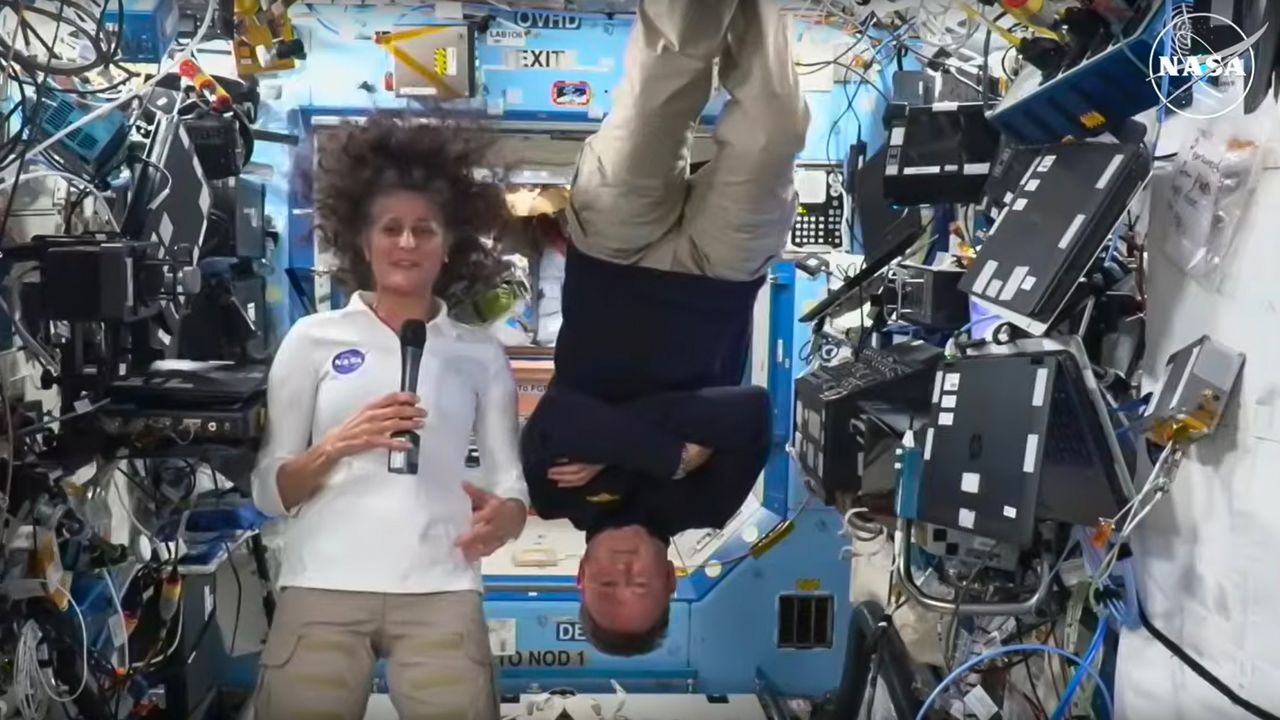CAPE CANAVERAL SPACE FORCE STATION — NASA's Starliner astronauts said on Friday afternoon they are not let down by Boeing’s troubled spacecraft and shared their thoughts of having to watch their ride home return to Earth without them.
What You Need To Know
- Cmdr. Barry "Butch" Wilmore and pilot Sunita "Suni" Williams say they did not give it a thought about not returning in the Starliner
- They share about missing special family moments now that they will be on the space station longer than planned
- Get more space coverage here ▶
- 🔻Scroll down to view the interactive Starliner mission events🔻
The Boeing Crew Flight Test astronauts Cmdr. Barry "Butch" Wilmore and pilot Sunita "Suni" Williams left Earth on Boeing's Starliner capsule on Wednesday, June 6, but will return home on SpaceX's Dragon capsule during the Crew-9 mission early next year.
What was supposed to be an eightish-day mission has turned into an eight-month mission. After a series of issues with Boeing's Starliner — before, during and after the launch — NASA played it safe by bringing the spacecraft back to Earth empty.
Starliner returned safely from the International Space Station on Saturday, Sept. 7, at White Sands Space Harbor in New Mexico.
Since Wilmore and Williams will now return home on the SpaceX’s Dragon capsule, NASA had to cut the Crew-9 roster from four to two.
But during a teleconference from the International Space Station on Friday afternoon, Wilmore and Williams said they were not disappointed by Boeing or the Starliner space capsule.
“Let down? Absolutely not. (It) never entered my mind,” Wilmore said when asked about his thoughts. “Ninety percent of our training is preparing for the unexpected. And sometimes the actual unexpected goes beyond what you even think could happen. And that is just the way it goes sometimes because we are pushing the edges of the envelope and in everything that we do and it’s not easy.”
Williams said they were in the space station’s observation module, called the cupola, and watch the Starliner named Calypso undock from the floating laboratory last week.
“We were up in the cupola and watching our spacecraft fly away at that point in time,” she said, who later added, “… I was so happy it got home with no problems.”
Wilmore said he was thrilled that it came back and, “the fact that we were not on it didn’t come to mind at all.”
“Certainly, as the commander and PLT of your spacecraft, you don’t want to see it go off without you and that’s where we ended up,” he later said.
The floating pair did share with the media that their thoughts are always with their families, but stressed that due to their careers in the U.S. Navy, their loved ones are used to them being away.
But they did admit that it was not easy to miss out on family events.
“I have to say though in the back of my mind, there are folks on the ground who had some plans, right? Like my family and to spend time with my mom. And I think I was fretting more about that, like the things that we had sort talked about and planned for this fall and this winter. And I think I was a little bit nervous to be honest with you, to say, ‘I’m not coming home for it’. But you know what? Like we both mentioned at the very beginning, everybody is onboard and supporting us while we are up here. I think that fret went away real quick.”
Wilmore followed up, saying that these were trying times and he was going to miss his youngest daughter’s senior year of high school and his oldest daughter’s time as a sophomore at the East Texas Baptist University.
“… We tried to teach them the principles that are important and to let them understand that trials … makes you stronger,” he said, adding that both he and Williams are grateful to be safe and doing space work that they enjoy doing.
In fact, they are both members of the space station’s Expedition 71 and 72 and are working on it. An expedition means the current crew in the International Space Station.
The duo did say they not just appreciate the support from NASA, but also from people down back on Earth who are sending them positive messages.
Starliner’s woes
The Boeing Crew Flight Test has seen a series of issues, from trying to get off the ground to docking with the International Space Station.
The $4.2 billion Starliner saw five helium leaks, which are believed to be caused by a faulty seal. These leaks disturbed the service module’s five aft/rear reaction control system maneuvering thrusters. These thrusters are used for the docking of the International Space Station.
All five thrusters were not operational but essentially after turning the thruster system on and off, only four came back on. The fifth one remained off for the mission.
(Scroll down to learn more about the Starliner's troubled history and why it could not return home with its crew.)
The test was part of NASA’s Commercial Crew Program, which is constructed to work with American aerospace companies to build spacecraft and rockets to send technology and astronauts from U.S. soil.




